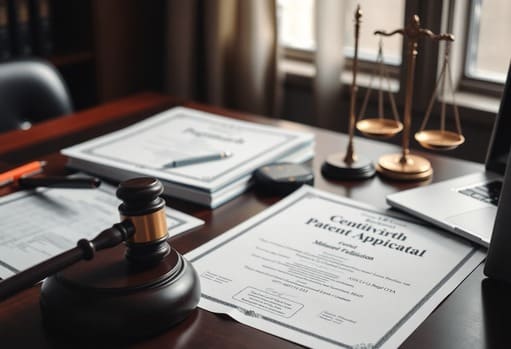How do I protect my intellectual property in Australia (trademarks, copyrights, patents)?
This guide will help you navigate the complexities of protecting your intellectual property (IP) in Australia, including trademarks, copyrights, and patents. Understanding these protections is crucial for safeguarding your creative ideas, innovations, and brand identity. You’ll learn how to register your trademarks, secure your copyrights, and apply for patents to ensure that your intellectual assets remain yours. By taking these steps, you can confidently protect your work and maintain your competitive edge in the market.
Key Takeaways:
- Trademarks: Register your trademark with IP Australia to protect your brand identity, ensuring exclusive rights to use the mark for your goods and services.
- Copyrights: Automatically protect your original works such as art, music, and literature. It’s advisable to keep records of creation dates to establish ownership if disputes arise.
- Patents: For inventions, apply for a patent through IP Australia to secure a 20-year monopoly on your invention, provided it meets the criteria of novelty, inventive step, and usefulness.

Types of Intellectual Property
A variety of intellectual property protections exist to help you safeguard your creations. Understanding these types can ensure your rights are enforced effectively.
- Trademarks
- Copyrights
- Patents
- Trade Secrets
- Design Rights
Thou should explore each type to determine which best suits your needs.
| Trademarks | Symbols, logos, or phrases distinguishing your products or services. |
| Copyrights | Protection for original works of authorship, including literature and art. |
| Patents | Exclusive rights for inventions or processes, granted for a limited time. |
| Trade Secrets | Confidential information providing a competitive edge. |
| Design Rights | Protection for the visual appearance of a product. |
Trademarks
Trademarks are crucial for distinguishing your products or services in the marketplace. By registering a trademark, you secure exclusive rights to use specific symbols, logos, or phrases associated with your brand, helping to build recognition and trust among consumers.
Copyrights
Property laws in Australia grant copyright protection for your original works of authorship, including writing, music, and artworks. This legal protection gives you the exclusive rights to reproduce, distribute, and display your creations for a specified period.
Understanding copyright is important as it allows you to maintain control over how your work is used. It automatically applies when your work is created, so you don’t need registration; however, registering your copyright provides additional advantages in enforcement and protection.
Patents
If you invent a new product or process, securing a patent protects your invention from being used or sold without your permission. This exclusive right typically lasts for 20 years, allowing you to capitalize on your innovative ideas.
For instance, possessing a patent can increase your business’s value, attract investors, and provide leverage in negotiations. To qualify for a patent, your invention must be novel, useful, and non-obvious, so it’s imperative to assess its eligibility carefully.
Tips for Protecting Your Intellectual Property
Even in a competitive market, there are effective strategies to safeguard your intellectual property. Consider following these tips:
- Conduct thorough research before filing applications.
- Register your trademarks, copyrights, and patents to maximize protection.
- Implement monitoring systems to detect infringements promptly.
- Take swift legal action against any violations.
Recognizing the value of your intellectual property is the first step toward effective protection.
Research and Registration
An necessary part of protecting your intellectual property is to engage in comprehensive research and registration. By understanding existing trademarks, copyrights, and patents, you can avoid potential conflicts and ensure your creations are adequately safeguarded. Consider consulting a professional to help navigate the registration process and improve your chances of securing your rights.
Monitoring and Enforcement
Clearly, ongoing vigilance is necessary in safeguarding your intellectual property. Regularly monitor the market for any unauthorized use of your trademarks or other creations. Take proactive measures such as setting up alerts for potential infringements and reaching out to customers, suppliers, or platforms to enforce your rights promptly.
A robust monitoring and enforcement strategy helps maintain the integrity of your intellectual property. This includes creating a clear plan for identifying infringers and administering appropriate legal steps when violations occur. By staying proactive and informed, you can effectively deter potential infringements and protect your valuable assets over time.
Step-by-Step Guide to Protect Your Intellectual Property
Keep your creative assets safe by following this step-by-step guide tailored to help you understand your rights and options for protection.
| Step | Description |
| 1. Identify Your IP | Determining the type of intellectual property you own. |
| 2. Conduct Searches | Checking for existing trademarks or patents. |
| 3. File Applications | Completing the necessary paperwork for registration. |
| 4. Monitor Compliance | Ensuring your rights are upheld and protected. |
Identifying Your IP
Property rights vary, so start by identifying what intellectual property you possess. This includes trademarks (brands, logos), copyrights (creative works), and patents (inventions). Understanding the specifics of each category will empower you to take the next steps effectively.
Filing Applications
Clearly, the application process is key to securing your rights. You’ll need to complete the appropriate forms and provide relevant information about your intellectual property. This can typically be done online through government agencies tasked with IP protection.
Plus, ensure you pay the required fees and submit your application to the relevant authorities, like IP Australia. An incomplete application may delay protection, so be thorough and precise in providing the necessary details to safeguard your intellectual property effectively.
Key Factors to Consider
Many factors influence how you protect your intellectual property effectively in Australia. Consider the following points:
- Your type of intellectual property (trademark, copyright, patent)
- Jurisdiction and geographic protection
- Duration of protection
- Costs and fees associated with registration
- Enforcement and monitoring strategies
This awareness will equip you with the necessary knowledge to safeguard your creations effectively.
Geographic Protection
Even if you have protected your intellectual property in Australia, that protection does not extend globally. You need to think about where you will conduct business and how your intellectual property may be used outside Australia. Depending on your target markets, it could be advantageous to pursue international registrations through agreements like the Madrid Protocol for trademarks, the Berne Convention for copyrights, or Patent Cooperation Treaty (PCT) for patents.
Duration of Protection
An important aspect of protecting your intellectual property is understanding the duration for which that protection lasts. Different types of intellectual property come with varied timeframes that can affect your business strategy.
Understanding the duration of protection is necessary for any business owner. Trademarks can last indefinitely as long as you continue to use and renew them, while copyrights generally last for the life of the creator plus 70 years. In contrast, patents typically provide protection for 20 years from the filing date. Knowing these timelines can help you plan for the future, manage your assets effectively, and ensure that you take necessary steps to maintain your rights before they expire.
Pros and Cons of Intellectual Property Protection
Unlike the tangible assets you own, intellectual property (IP) involves intangible rights that can significantly impact your business. Understanding these pros and cons helps you make informed decisions about protecting your innovations and creative efforts.
Pros and Cons of IP Protection
| Pros | Cons |
|---|---|
| Enhances business value | Can be costly to obtain |
| Prevents unauthorized use | Requires ongoing maintenance |
| Increases competitive advantage | Might limit research and collaboration |
| Provides legal recourse | Can be time-consuming to enforce |
| Encourages innovation | Infringement risks and costs |
Advantages
There’s a multitude of advantages connected with intellectual property protection. By safeguarding your innovations, you can enhance the value of your business and establish a strong brand identity. This protection prevents unauthorized use of your creations, giving you a competitive edge and allowing for potential licensing opportunities, which can create additional revenue streams.
Disadvantages
The disadvantages of intellectual property protection can present challenges for you as a business owner.
Understanding the drawbacks is vital. The process of obtaining IP protection often entails significant costs and may require a considerable amount of time for applications to be processed. Additionally, maintaining your rights can be burdensome, involving ongoing fees and monitoring for infringements. Limiting the scope of your IP can also restrict collaborations and research opportunities, which may hinder your business’s potential for growth and innovation.

Common Misconceptions about Intellectual Property
Once again, many individuals and businesses hold misinformed beliefs about intellectual property. These misconceptions can lead to inadequate protection and potential losses. For instance, some may think that simply creating an original work automatically grants them copyright, or that trademark registration is unnecessary for a recognizable brand. Such misunderstandings can leave your valuable ideas and creations vulnerable to infringement.
Myths vs. Facts
Intellectual property is surrounded by various myths that often mislead creators and entrepreneurs. A common myth is that all ideas are automatically protected, while the fact is that protection only occurs once you’ve taken the necessary legal steps. You need to actively register trademarks or apply for patents to secure your rights effectively.
Understanding Limitations
Any protection you obtain for your intellectual property has its limitations. While trademarks, copyrights, and patents grant you certain exclusive rights, they do not provide absolute immunity from others using similar ideas or designs. Moreover, the duration and scope of protection can vary significantly across different types of intellectual property.
Another important aspect to consider is that even once protected, you must actively enforce your rights. If you fail to monitor or take action against potential infringements, you risk losing your protection. Additionally, the geographical boundaries of your rights can limit you; for instance, a patent granted in Australia does not automatically extend to other countries. As a business owner, it’s vital to understand these limitations to fully protect your intellectual property assets.
Conclusion
Now that you understand how to protect your intellectual property in Australia, it’s important to take proactive steps. Register your trademarks with IP Australia, ensure your original works are covered by copyright, and file for patents if you have innovative inventions. Additionally, keep documentation of your creations and consider legal advice to navigate any complexities. By actively managing your intellectual property rights, you can safeguard your innovations and maintain your competitive edge in the market.
FAQ
Q: What are the steps to register a trademark in Australia?
A: To register a trademark in Australia, follow these steps: First, conduct a comprehensive search of existing trademarks to ensure your desired trademark is not already in use. You can use the IP Australia’s TM Headstart service for an early indication of your trademark’s registrability. Next, file an application with IP Australia online, providing details such as the trademark representation, goods and/or services it will cover, and the applicant’s information. After submission, your application will undergo examination. If accepted, it will be published in the Australian Official Journal of Trade Marks for opposition. If no opposition is filed, the trademark will be registered, granting you exclusive rights to use it for your goods and services.
Q: How can I protect my copyright in Australia?
A: Copyright protection in Australia is automatic when an original work is created and fixed in a material form. To protect your copyright, ensure that your work, such as artistic creations, literature, music, or films, is documented and dated. You can also add a copyright notice (e.g., © [Year] [Your Name]) to your work, although this is not legally required. For additional security, consider registering your work with a copyright collecting agency or using digital rights management methods to deter unauthorized use. Keep records of your work’s creation process and maintain proof of ownership to support your claims if infringements occur.
Q: What is the process for obtaining a patent in Australia?
A: To obtain a patent in Australia, you must first determine whether your invention is patentable, which requires that it be novel, inventive, and useful. Next, conduct a thorough prior art search to ensure that your invention has not been previously disclosed. If patentable, you can apply for either a provisional or complete patent through IP Australia. A provisional patent provides a 12-month period to further develop your invention and decide whether to file a complete patent application. The complete application will be examined for compliance with patentability requirements. If approved, your patent will protect your invention for up to 20 years (or 25 years for pharmaceutical patents) in exchange for public disclosure of your invention.
Source article: https://smallbiztoolbox.com.au/how-do-i-protect-my-intellectual-property-in-australia-trademarks-copyrights-patents/







